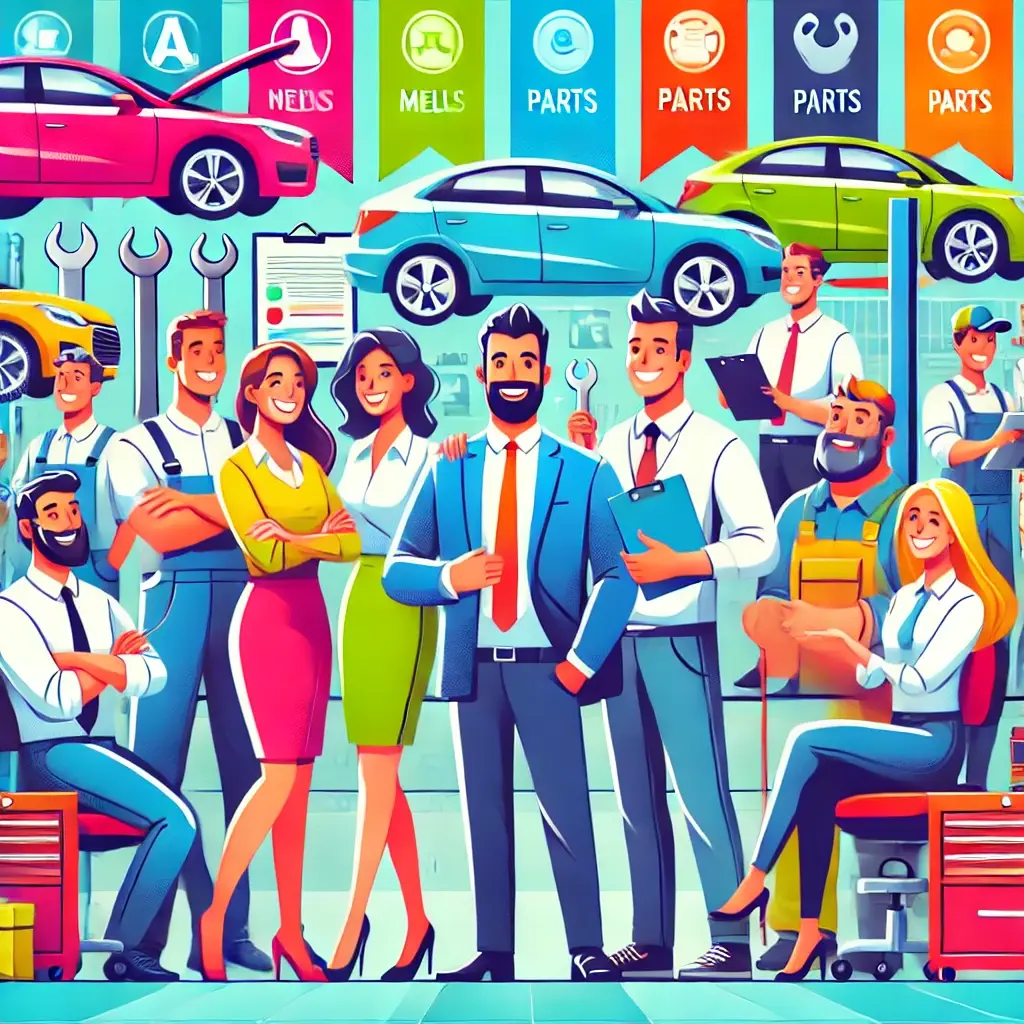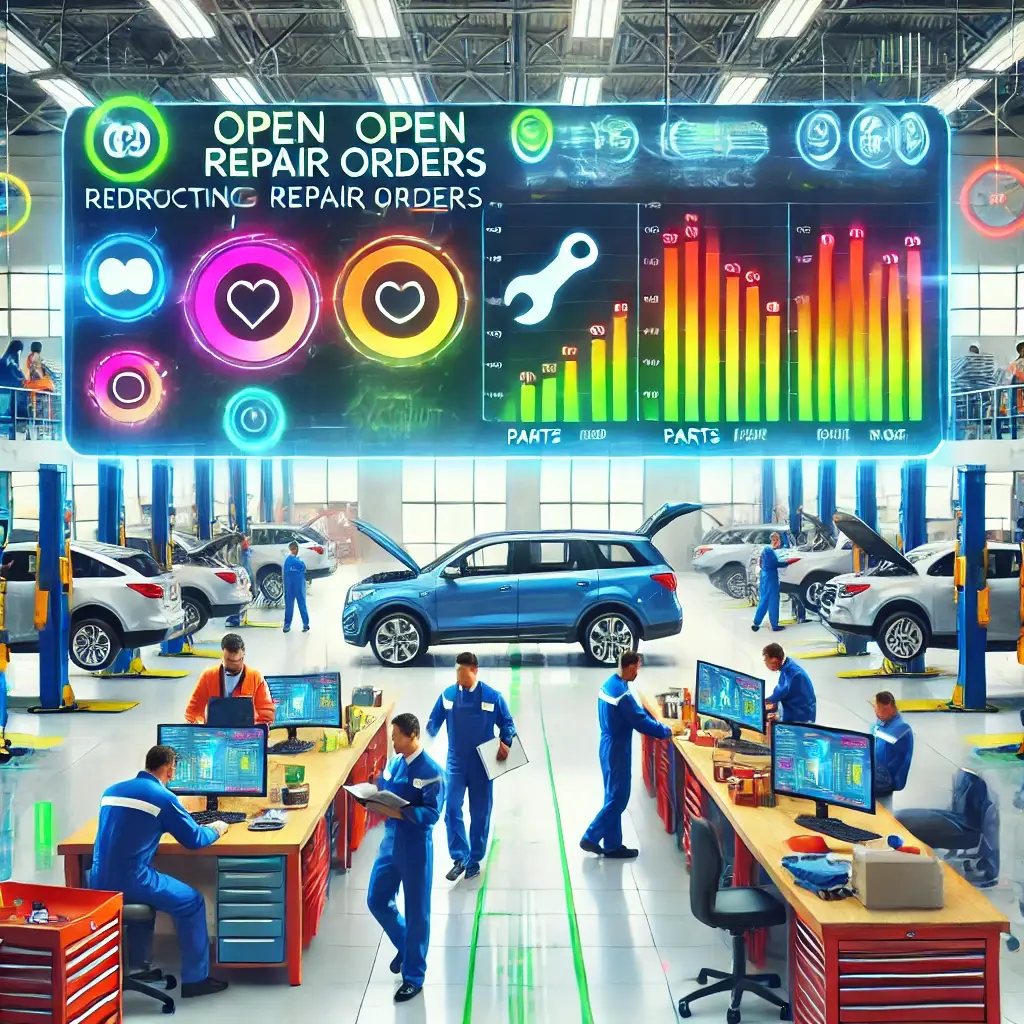A Fixed Ops Guide
In today’s competitive automotive market, the service department is often the lifeblood of a dealership. While car sales may fluctuate with the market, service remains a consistent revenue stream that keeps customers returning to the dealership long after they’ve driven off the lot. However, running an efficient and profitable service department isn’t just about fixing cars—it’s about maximizing the productivity of your team, enhancing customer experiences, and driving profitability through streamlined processes. This guide will walk through the key strategies that can help you optimize your service department for peak efficiency and long-term success.
Tracking Key Metrics: The Backbone of Service Efficiency
If you can’t measure it, you can’t manage it. Key performance indicators (KPIs) serve as the foundation for understanding where your service department excels and where improvements are needed. By tracking metrics like labor sales, gross profit, hours sold, and technician productivity, you gain critical insights into your department’s performance.
Key Metrics to Track:
- Hours Sold: Are your technicians consistently hitting their targets? Hours sold per day is one of the most vital metrics to determine how well your service bays are being utilized.
- Customer Labor vs. Warranty Labor: It’s important to distinguish between customer-pay labor and warranty labor. While warranty work is necessary, customer-pay jobs are typically more profitable. Understanding this ratio helps focus on driving customer-pay work into the shop.
- Average Repair Order (RO) Value: Tracking the average revenue per repair order can help you gauge the efficiency of your service advisors in upselling services and products, ultimately increasing revenue per job.
Using real-time dashboards or reports, you can stay on top of these metrics and make informed decisions that improve day-to-day operations and overall service department performance.
Boosting Technician Productivity
Technicians are the backbone of your service department. Their efficiency directly impacts the number of cars your dealership can service in a day, which in turn influences profitability. But boosting technician productivity is not just about working faster—it’s about working smarter.
Key Strategies to Improve Productivity:
- Clear Job Assignment: Ensure jobs are clearly assigned and prioritized based on factors such as job difficulty, available parts, and technician specialization. Proper job distribution can help minimize downtime and bottlenecks.
- Reducing Downtime: Make sure your technicians have easy access to tools, parts, and information. Delays due to missing parts or unclear repair instructions can cripple productivity.
- Continuous Training: Regularly update your technicians on the latest automotive technology and repair procedures. Well-trained technicians are more confident, efficient, and less prone to mistakes.
Additionally, by tracking individual technician performance metrics like clocked hours vs. billed hours and efficiency ratios, you can identify areas for improvement and provide targeted coaching where needed.
Empowering Service Advisors for Peak Performance
While technicians handle the repairs, service advisors are your front line when it comes to customer experience and upselling. They play a crucial role in maximizing the profitability of each repair order and ensuring a smooth customer journey.
How to Empower Your Service Advisors:
- Train for Effective Upselling: Service advisors should be well-versed in identifying upsell opportunities based on a customer’s vehicle history and current needs. Whether it’s routine maintenance or additional services, upselling done right can significantly increase RO value while enhancing customer satisfaction.
- Customer Relationship Management: Service advisors should focus on building long-term relationships with customers. Personalized service and timely follow-ups foster customer loyalty and lead to repeat business.
- Performance-Based Scorecards: Implement scorecards that track each advisor’s success metrics, such as upsell conversion rates, average repair order value, and customer satisfaction scores. These scorecards can be used to reward high performers and identify training opportunities for others.
By fostering a data-driven culture, your service advisors will have the tools and motivation needed to continuously improve their performance.
Leveraging Real-Time Scorecards for Continuous Improvement
One of the most powerful tools in your service department’s efficiency arsenal is the real-time scorecard. Unlike traditional reports that offer a static view of past performance, real-time scorecards provide live data that can be used to make adjustments on the fly.
Key Benefits of Real-Time Scorecards:
- Instant Visibility: Get an up-to-the-minute view of key metrics such as gross profit, labor hours sold, parts availability, and technician efficiency. This helps identify potential issues—such as jobs that are taking too long or unproductive bays—before they escalate into larger problems.
- Employee Accountability: Real-time tracking holds both technicians and service advisors accountable for their performance, creating a culture of transparency and improvement.
- Dynamic Decision-Making: Managers can make quick, informed decisions based on real-time data. Whether it’s reallocating jobs or scheduling more technicians during peak hours, the ability to act immediately keeps operations running smoothly.
This continuous feedback loop promotes a culture of accountability and encourages incremental improvements that, over time, lead to significant efficiency gains.
Creating a Culture of Efficiency
Ultimately, maximizing service department efficiency is about creating a culture where every team member—from technicians to service advisors to managers—is aligned around the same goals: productivity, profitability, and customer satisfaction.
Building an Efficiency-Driven Culture:
- Leadership: Lead by example. When management is committed to tracking performance and making data-driven decisions, the entire department will follow suit.
- Incentives: Reward high performance and innovation. Whether through bonuses or recognition programs, incentivizing efficiency encourages employees to take ownership of their roles.
- Continuous Improvement: Encourage a mindset of continuous improvement. Even small gains in efficiency add up over time, so instill a culture where every team member seeks out ways to improve processes.
Maximizing the efficiency
Maximizing the efficiency of your service department is not a one-time task—it’s an ongoing journey. By tracking key metrics, boosting technician and service advisor productivity, and leveraging real-time scorecards, your dealership can create a service department that’s not only highly efficient but also highly profitable. Focus on these strategies, and you’ll not only improve your bottom line but also enhance the customer experience—leading to loyal customers and a thriving business for years to come.







